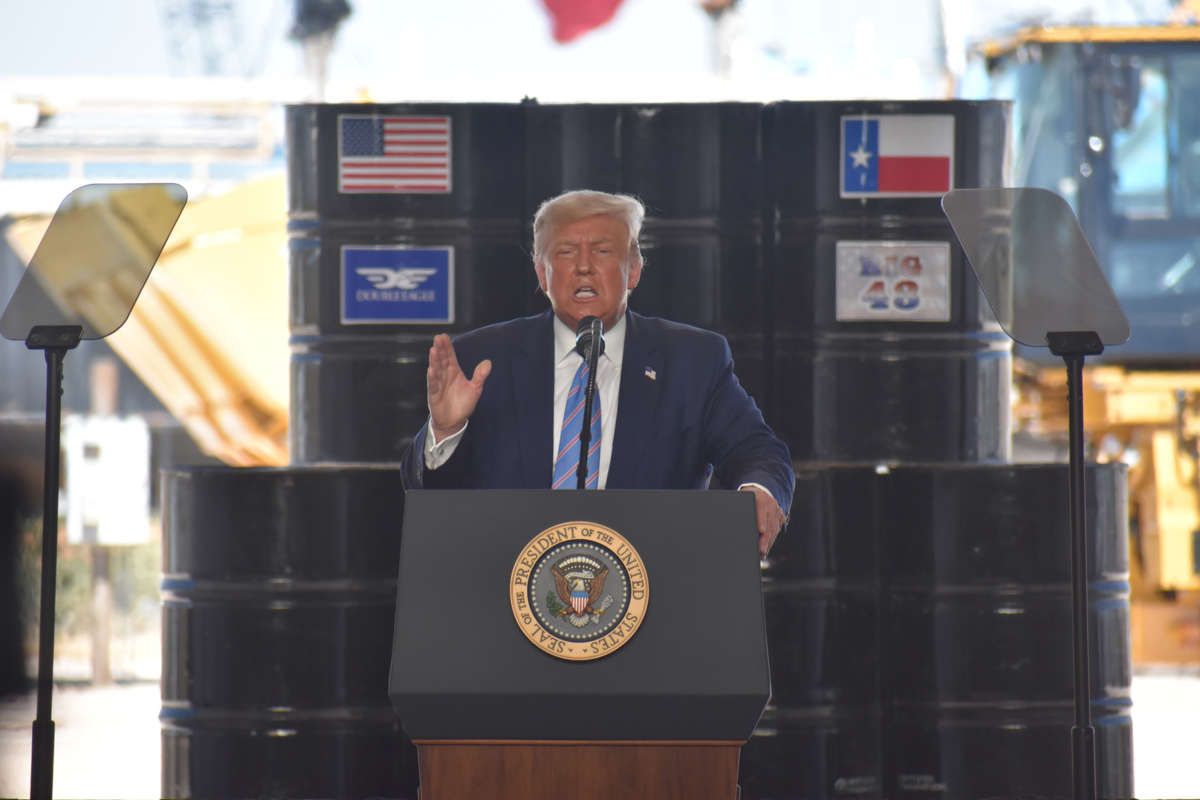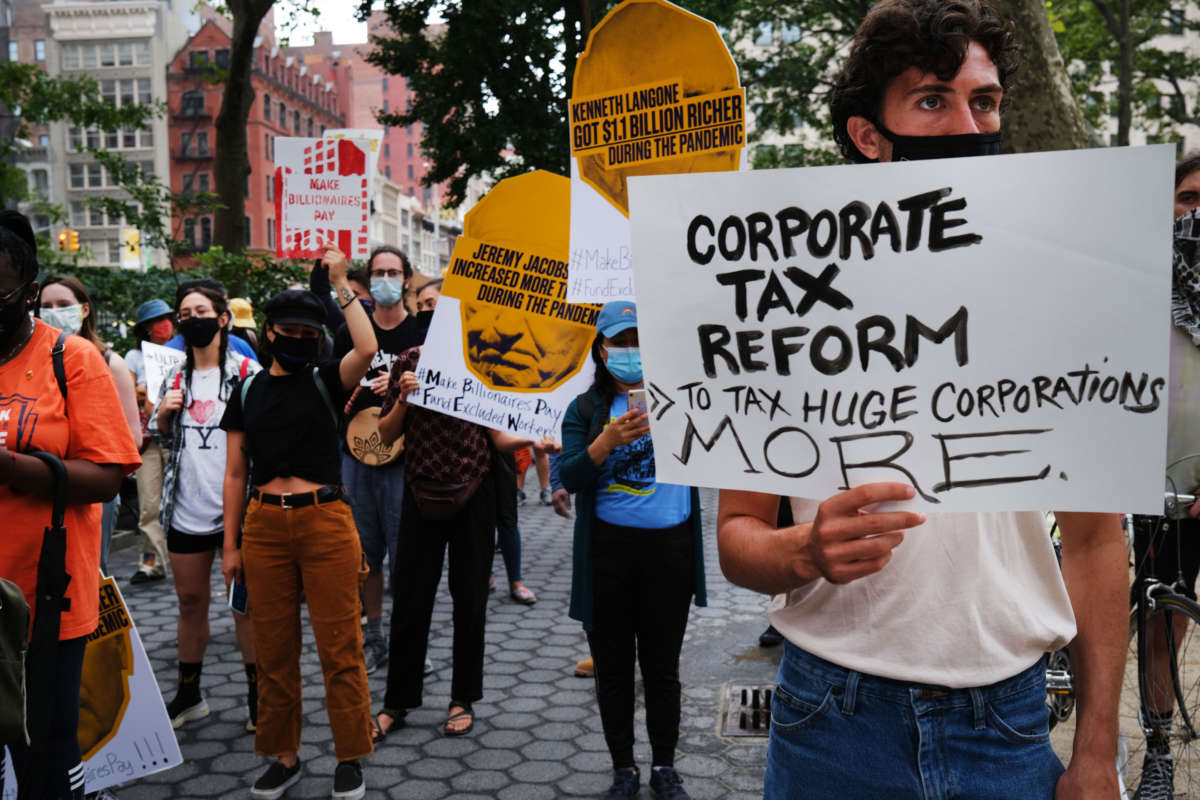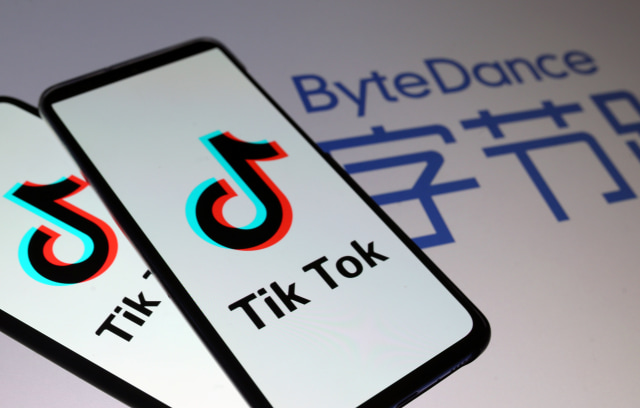Mass Arrests in 2020 Echo the Brutality Endured by RNC Protesters 20 Years Ago
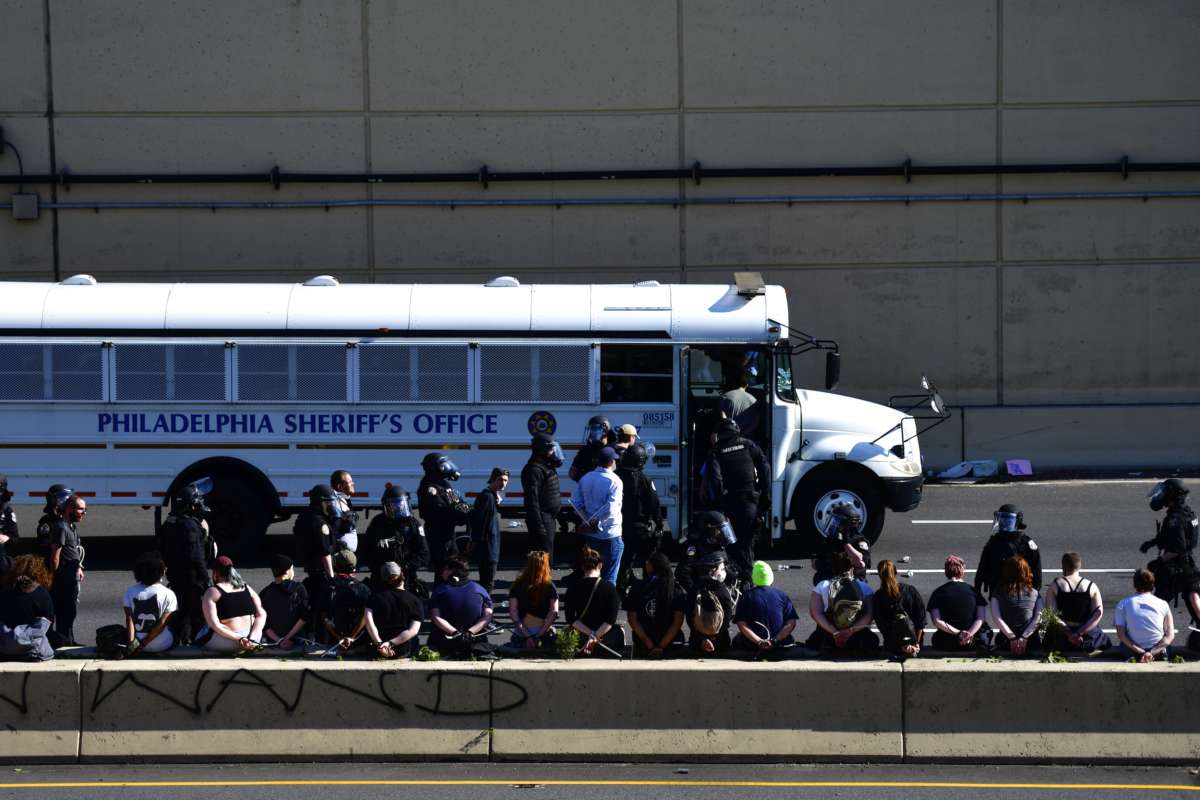
Arrested protesters stand and sit on a barrier of the Vine Street Expressway after police shot tear gas to disperse the crowd on June 1, 2020, in Philadelphia, Pennsylvania.
MARK MAKELA / GETTY IMAGES
BY Kris Hermes, Truthout PUBLISHED August 1, 2020

PART OF THE SERIES
The Road to Abolition
Police surrounded a West Philadelphia warehouse on the afternoon of August 1, where more than 70 protesters were making puppets. Multiple Pennsylvania state police officers infiltrated the group of “puppetistas” days earlier and, that afternoon, the deputy police commissioner of the Philadelphia Police Department (PPD) claimed that protesters had bomb-making materials inside. Everyone was arrested, including the owners of the warehouse.
That was 20 years ago, but it could have been yesterday given the repressive events over the past several weeks in the wake of George Floyd’s murder at the hands of a white Minneapolis police officer.
The “puppet warehouse” arrests occurred during the Republican National Convention (RNC) in 2000, with more than 400 people arrested in total that day. As I wrote in Crashing the Party: Legacies and Lessons from the RNC 2000 (PM Press), no bomb-making materials were ever found, but people paid the price for blocking roads by spending up to two weeks in jail and years of their lives defending themselves in court.
After more than three years of court battles with an acrimonious district attorney, nearly everyone’s charges were thrown out. Then, civil lawsuits ensued.
In some ways, Philadelphia and its methods of policing have changed dramatically over the past 20 years. In other ways, the city has managed to keep — or even enhance — its repressive playbook that harkens back to the era of Frank Rizzo, the city’s notorious police commissioner-turned-mayor, whom the current district attorney recently referred to as “neo-fascist.”
In some ways, Philadelphia is still living down its reputation of having one of the most brutal police departments in the country, and it got that reputation under Rizzo, who was also well known for his anti-Black racism and bigotry. As mayor, Rizzo opposed school and housing desegregation and oversaw the 1978 siege on the house of Black liberation group MOVE, which resulted in conviction and decades of imprisonment for nine members accused of killing a PPD officer in the police-instigated melee.
Criminal Legal Issues and Black-Led Uprisings
Both the city and protest organizers alike planned for months in advance of the RNC, a singular event that promised to bring commerce and prestige to Philadelphia. Although people were protesting some of the same criminal legal issues 20 years ago on August 1 — an end to police violence, abolition of the prison-industrial complex and freedom for Mumia Abu-Jamal — the 2000 RNC took place at the height of the mostly-white global justice movement.
By contrast, the latest uprisings have been spontaneous, with people reaching a boiling point after decades of unaddressed structural racism and police violence. The current protests have been led by the people most impacted by that structural racism, and have lasted for several weeks.
Black-led organizations like the Student Liberation Action Movement from Hunter College influenced the direction of the RNC protests to be sure. But the Black Philly Radical Collective (BPRC) — currently making the most vocal and far-reaching demands of the Philadelphia power structure — includes longstanding organizations fighting for Black freedom and liberation, and represents a significant departure from the political dynamic in 2000.Some of the lawyers who were active in defending RNC protesters, like Paul Hetznecker, are now representing people protesting the murder of George Floyd.
Some of the same protest tactics were employed in both eras — from street blockades to property damage, including defacing the statue of Frank Rizzo. However, the more recent rage felt by persistent police violence and anti-Black racism in Philadelphia created the conditions for far more militant protests, including the destruction and dispossession of numerous businesses, and the burning of multiple police cars.
Like clockwork, in 2000 and today, the police commissioner and mayor publicly vilified anarchists in order to discredit and criminalize the protests generally, but also to sow division and justify a brutal police crackdown.
Police Response to Protests
A former beat cop with the New York City Police Department, John Timoney was the Philadelphia police commissioner in 2000 and one of the architects of today’s violent policing model, which social scientists refer to as “strategic incapacitation.” Timoney lived for media attention and infamously said, “the paramount goal for the Philadelphia Police Department: Not to be seen on the six o’clock news beating the living daylights out of protesters.”
Achieving his goal for the most part, police simply beat the living daylights out of protesters off-camera. Before the proliferation of cell phones, police more easily evaded public scrutiny. Police violence in 2000 was mostly limited to brute force, batons and pepper spray, but bicycles were also used as weapons against protesters.
Timoney deliberately avoided the use of tear gas and projectile weapons during the RNC and, arguably, gained greater public support as a result. As a side note, Timoney went on to become the police chief in Miami and then used a staggering array of weapons against protesters at the 2003 Free Trade Area of the Americas demonstrations.
The current police commissioner, Danielle Outlaw, came from Portland, Oregon, as the first Black woman to head that city’s police department. But, Commissioner Outlaw also faced national scrutiny at the time for her handling of protests involving far right and anti-fascist groups. She had been on the job in Philadelphia for less than three months when the uprisings began.
It’s fair to say that the PPD, both now and in 2000, reacted to protests with wanton violence and little regard for protesters, medics, legal observers, media or bystanders. In response to recent protests, however, the PPD used a far greater array of weapons than at any other time since the 1970s. In addition to brute force and batons, the police arsenal included tear gas, pepper spray, rubber bullets and bean bag rounds, according to Áine Ní Shionnaigh of Up Against the Law (UATL), a local collective providing legal support to protesters.
On May 31, a militarized police force marauded through a historically Black community of businesses and residential neighborhoods in West Philadelphia for hours that afternoon and into the evening. The area under police occupation was not far from where the city dropped a bomb on another MOVE house in 1985, killing 11 people, including five children, and burning to the ground an entire city block of residences.
Police shot “less-lethal” projectiles and pepper spray at anyone who got in their way. They shot tear gas from armored vehicles, incapacitating not only people in the streets, but also many residents, including small children. At least one tear gas canister landed on a family’s front porch, forcing them to evacuate their home. Philadelphia Mayor Jim Kenney defended the police actions in West Philadelphia for weeks, then in July offered a written apology. An internal investigation is still underway, and no officers have been disciplined for the attacks.
The most well-known example of police using this broad arsenal of weapons happened the next day, on June 1. In response to protests on Interstate-676, SWAT teams gave no warning or dispersal orders before attacking protesters with projectile and chemical weapons. One SWAT officer, who was later fired, was filmed pulling the masks off of protesters and pepper spraying them directly in the eyes and face.
As people were attempting to flee this attack and disperse from the freeway, police trapped scores of people on a fenced-in embankment and proceeded to tear gas the crowd and shoot at them with projectile weapons.
The city initially advanced a story that protesters had trapped a state trooper in his car, and were throwing projectiles at police. But, on June 25, more than three weeks after the incident, Commissioner Outlaw and Mayor Kenney were forced to recant and publicly apologize just hours after The New York Times published a detailed investigative report of the incident, which directly contradicted the official accounts.
Mass Arrests Are Still Used to Stifle Dissent
Similar to what they did in 2000, police recently used the tactic of mass arrests to clear the streets of protesters. More than 2,000 people were arrested for curfew violations, failure to disperse, disorderly conduct, and other misdemeanor and felony charges stemming from the George Floyd protests in late May and early June, according to the district attorney’s office.
When Mayor Kenney took office in 2016, he led an effort to “decriminalize” protest-related violations ahead of the Democratic National Convention (DNC) that year. It was said that Kenney wanted to use civil citations — equivalent to a traffic ticket — as a way to avoid repeating what occurred at the RNC in 2000. But, civil rights lawyers argue the policy is still used to unlawfully arrest people in large groups in order to stifle dissent.
Protesters were recently arrested in this fashion all over the city. Instead of citing and releasing people, police took arrestees into custody, and held many of them on buses for up to 12 hours with no air conditioning or water, and without medical attention, according to Ní Shionnaigh of UATL. This was a similar tactic and form of punishment used by police in 2000 that likewise prevented activists from reengaging in protest activity. Arrestees in May and June were also questioned and photographed, with some held for longer than 24 hours, before being cited and released.
Philadelphia also has an odd and troubling tendency to detain people in decommissioned facilities. Supposedly, to address capacity issues in 2000, some protesters were taken to Holmesburg, a condemned century-old prison. Holmesburg was the site of a 1973 prison uprising in which the warden and deputy warden were killed, and home to chilling and deadly “experiments” carried out on mostly Black prisoners during the 1950s, ‘60s and ‘70s.
During the recent uprisings, nearly 50 people were held at the old House of Corrections, for similar capacity reasons, according to the city. The House of Corrections was decommissioned two years ago and deemed by the city to be “unfit for human life.” Equally troubling, FBI agents were also on site interviewing arrestees while they were under arrest and without legal counsel.
Federal prosecutors have taken control of some cases, like that of a person accused of setting fire to two police cars. That federal case in particular illustrates the kind of digital surveillance the FBI is conducting against protesters and the Movement for Black Lives. While law enforcement still employs the same type of infiltration and human intelligence-gathering methods used during the RNC 2000, advancements in technology over the past 20 years have enabled police to conduct more remote and more invasive forms of surveillance.
On July 8, Mayor Kenney announced that all of the civil citations issued to protesters from May 30 to June 30 would be waived in “recognition of the core concerns that caused thousands to demonstrate on the streets of Philadelphia.” But, lawyers have said that most of the citations were illegally or improperly issued anyway, and law enforcement’s objective of clearing the streets was accomplished at the time of arrest.
Consistent and Robust Legal Support for Protesters
As part of the effort to support protests against the RNC in 2000, a legal collective called “R2K Legal” was formed, which helped to vindicate those arrested and criminally charged. Once those cases were resolved, some members of R2K Legal joined with others to form UATL, which has provided legal support to social justice activists in Philadelphia ever since.
For the protests in May and June, UATL staffed a legal hotline and tracked protesters as they navigated the arrest and detention process. Also part of the legal support effort, both now and then, was the local chapter of the National Lawyers Guild, which trained and deployed hundreds of legal observers to monitor police misconduct and record arrests. The Philadelphia Community Bail Fund posted bail for jailed protesters and, with others, is calling on the district attorney to drop the remaining charges against hundreds of protesters.
Some of the lawyers who were active in defending RNC protesters, like Paul Hetznecker, are now representing people protesting the murder of George Floyd. Hetznecker and several other lawyers also filed suit against the city and PPD for their violent response to recent demonstrations on I-676 and in West Philadelphia.
Hetznecker’s was one of three civil lawsuits filed in July in an effort to hold the city and its police force accountable. According to Hetznecker, the lawsuit he and other lawyers filed is seeking “significant reform” to the city’s police department in addition to monetary damages. Although he couldn’t say at this stage what reform might look like, Hetznecker did say that “demilitarizing the police is not nearly enough.”
Philadelphia’s Political Apparatus Used for Repression, Then and Now
In 2000, Philadelphia Mayor John Street, Police Commissioner Timoney and District Attorney Lynne Abraham worked hand-in-hand to ensure an untarnished convention. When that goal became threatened, the city’s leaders used their respective positions of authority to discredit, arrest and criminally prosecute hundreds of protesters.
Current Mayor Kenney was a city council member during the RNC, and did little to defend or support activists facing serious charges at the time. As mayor, he oversaw one of the most brutal attacks on the people of Philadelphia in more than 40 years. Hetznecker, who marched as a teenager in an anti-racist coalition in Philly under Rizzo, told me that he “never experienced anything close to this level of police violence against peaceful protesters.”
Kenney defended then apologized for his use of chemical and projectile weapons on more than one occasion. The mayor may have waived a majority of the protest-related citations, but many say he’s still culpable for suppressing a popular uprising.
Police commissioners Timoney and Outlaw share a certain contempt for protesters and both are willing to use widespread violence against them. But that may be where the similarities end. In addition to the obvious differences in race, gender, age and experience, the starkest disparity between Timoney and Outlaw is how they responded to accusations of police abuse.
Timoney stood by his patently violent officers and claimed they had all shown incredible restraint in their response to the 2000 RNC protests. While Outlaw has largely defended the violent actions of many on the PPD, she fired the notorious pepper-spraying SWAT officer on I-676, which is something Timoney would never have done. Outlaw is firing at least one other officer, Inspector Joseph Bologna, but only after District Attorney Larry Krasner filed assault charges against him for using a baton to crack open the head of a protester.
Firing two police officers, whose violent misconduct went viral online, is a small concession for the weeks-long assault on thousands of people. It is also inconsequential to groups like the BPRC and Movement for Black Lives that are demanding far deeper structural changes from the city.
Lynne Abraham was the district attorney in 2000, and had a long career in law enforcement, initially working in the Rizzo administration. Abraham was part of the city’s political machine, loved and feared by enough Philadelphians to get her reelected as district attorney for nearly 20 years. She was known as the “Deadliest DA” for her record on the death penalty, and Abraham had a record of refusing to prosecute police who murdered Black residents. As a Common Pleas Court judge, she signed the warrant that precipitated the police bombing of the MOVE house.
Abraham vigorously and unsuccessfully prosecuted hundreds of RNC 2000 cases to their fullest extent just because she could. One of the lawyers defending protesters against Abraham’s prosecutors at the time was Larry Krasner, Philadelphia’s current DA. They couldn’t be more different from each other.
Krasner campaigned in 2017 as a progressive candidate far outside the political machine. His platform included ending cash bail and the city’s stop-and-frisk practices, refusing to use the death penalty and prosecuting police for their abuse and misconduct. After taking office in 2018, Krasner’s reform efforts have received significant political blowback, including from the Pennsylvania state legislature and attorney general, as well as from Mayor Kenney and Commissioner Outlaw.
While Krasner said he may yet pursue hundreds of criminal charges against people arrested for property damage and commercial burglary in connection with the George Floyd protests — angering many who are calling for him to throw out all protest-related charges — he says he wants to use a “restorative justice” approach. In early June, Krasner also announced the creation of a task force to investigate the more than 2,000 protest-related arrests.
Meager Reforms Fail to Address Philadelphia’s Deep-Seated Problems
In the end, protests against police brutality on August 1, 2000, had minimal lasting effects on Philadelphia. Police shootings of Black people continued unabated, with no interest by law enforcement to do anything about it.
By contrast, the recent uprisings spread to every U.S. state and involved hundreds of thousands of protesters. As a result, unprecedented policy changes are taking place across the country, including efforts to defund the police.If we don’t want to be in the same place 20 years from now, policymakers should take heed and act.
After years of opposition to the Rizzo statue in the center of the city, Mayor Kenney had the sense to remove it in early June. The New York Times report on the police response to protest on I-676 compelled Commissioner Outlaw to announce a moratorium on tear gas. Philadelphia Managing Director Brian Abernathy, the main liaison between the mayor and PPD, has endured calls for his resignation since being appointed by Kenney in 2018, but was forced to resign in July.
More than a week into the recent unrest, Kenney rescinded his proposal to increase the police budget by $19 million. Then, in late June, the City Council passed modest criminal legal reforms, including cutting $33 million — less than 5 percent — from the police budget. In a pro-police town like Philadelphia, systemic change is hard fought.
Mike Africa Jr., a member of the MOVE family and an organizer with BPRC, has been working with others on these issues for decades. He told Truthout in July that the group is demanding, among several structural changes, that the city completely eliminate the police budget. “Their reign of terror is over!” he said. “They do not serve our community. They are unnecessary.”
Needless to say, the city’s meager policy reforms — especially by comparison to those in other cities — do not come close to addressing the demands of groups like BPRC. As uprisings continue across the country, people are refusing to accept anything less than structural change. The Movement for Black Lives is demanding not only that we rethink policing and the carceral system, but also that we address the systemic economic and social inequities that have been perpetuated against Black people for years. If we don’t want to be in the same place 20 years from now, policymakers should take heed and act on those demands.
Kris Hermes is a legal worker member of the National Lawyers Guild and author of Crashing the Party: Legacies and Lessons from the RNC 2000.
MORE BY THIS AUTHOR…

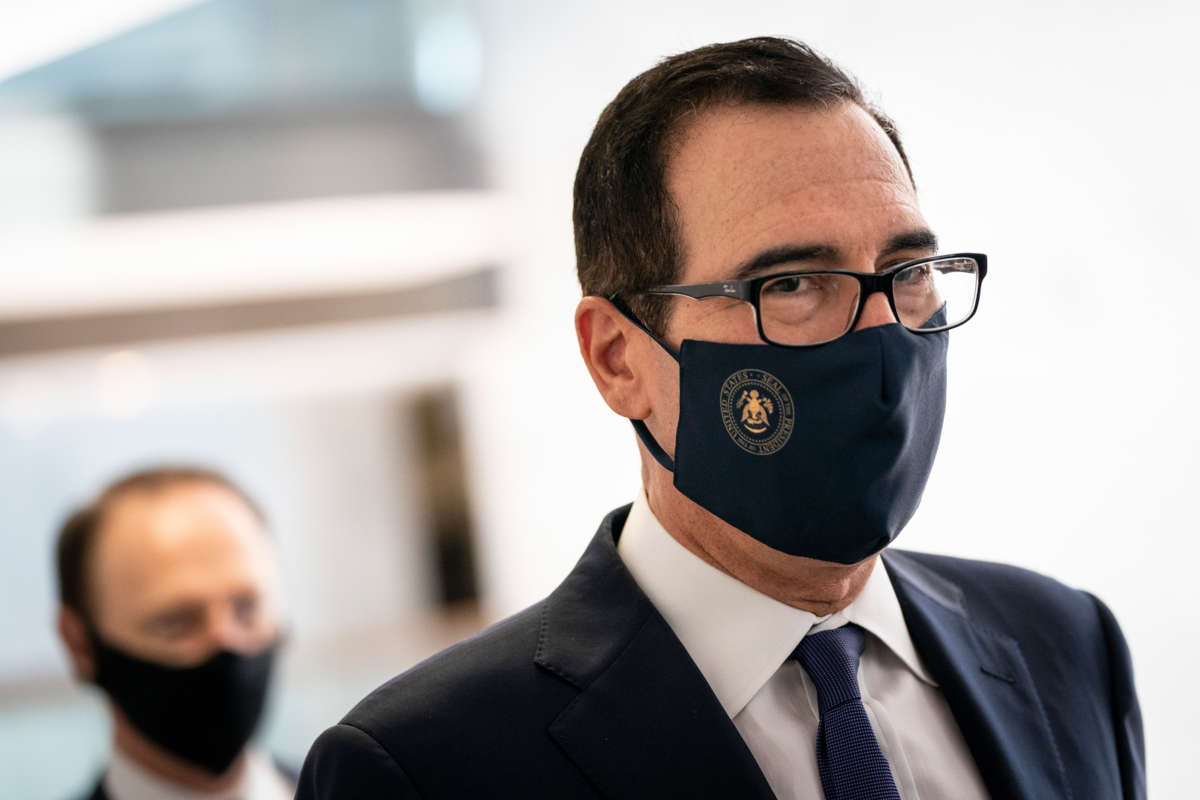 U.S. Treasury Secretary Steven Mnuchin walks with his security detail as he arrives at the Senate Republican policy luncheon in the Hart Senate Office Building on Capitol Hill on July 28, 2020, in Washington, D.C.DREW ANGERER / GETTY IMAGES
U.S. Treasury Secretary Steven Mnuchin walks with his security detail as he arrives at the Senate Republican policy luncheon in the Hart Senate Office Building on Capitol Hill on July 28, 2020, in Washington, D.C.DREW ANGERER / GETTY IMAGES